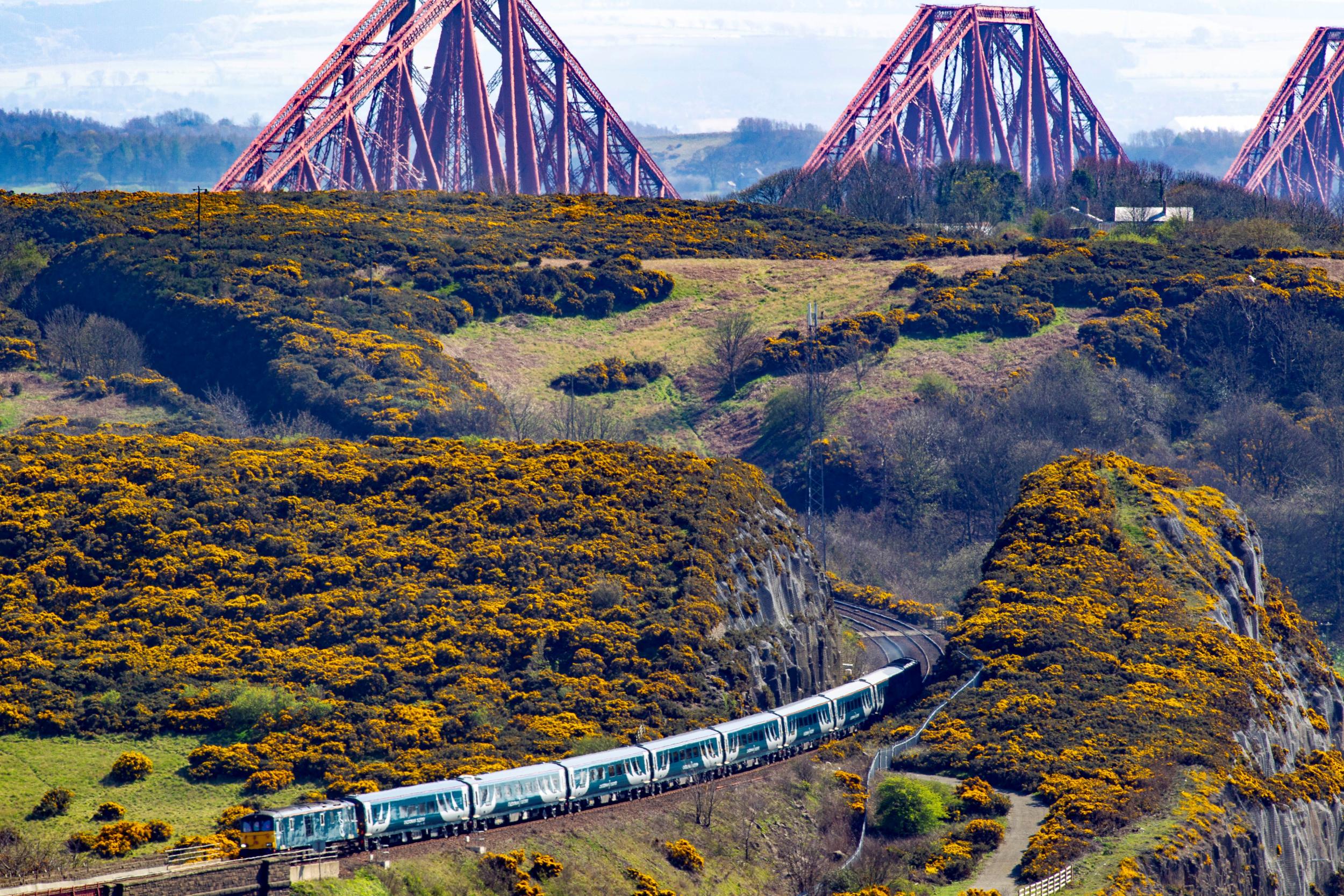20 pledges for 2020: Why sleeper trains are (sometimes) quicker than flying
I'm going flight-free for 2020


Your support helps us to tell the story
From reproductive rights to climate change to Big Tech, The Independent is on the ground when the story is developing. Whether it's investigating the financials of Elon Musk's pro-Trump PAC or producing our latest documentary, 'The A Word', which shines a light on the American women fighting for reproductive rights, we know how important it is to parse out the facts from the messaging.
At such a critical moment in US history, we need reporters on the ground. Your donation allows us to keep sending journalists to speak to both sides of the story.
The Independent is trusted by Americans across the entire political spectrum. And unlike many other quality news outlets, we choose not to lock Americans out of our reporting and analysis with paywalls. We believe quality journalism should be available to everyone, paid for by those who can afford it.
Your support makes all the difference.Take it from me: if you’re not going to fly, you’re going to have to get onboard (quite literally) with the concept of the sleeper train. Before my flight-free pledge, I barely knew they existed. Post-pledge, I am obsessed with them.
What is so great about sleeper trains? Well, it sure as heck isn’t the sleep, which is shallow and broken at best, nigh-on non-existent at worst. Have you ever tried to sleep while someone grabbed your arm and incessantly pushed you backwards and forwards for eight hours? It’s like that. And then there’s the noise; blimey, it’s a loud business. The whole thing is, in fact, very much like trying to fall asleep while on a moving train…
Anyway, that’s beside the point. The incredible thing about sleeper trains is that they give you back time – the most precious of commodities when staying grounded. Get the right sleeper, and rail travel becomes quicker than air travel. Hear me out: no, not in terms of actual hours. But in terms of useful hours – hours where you could have been doing something else – the maths can and does work in the humble train’s favour.
Take my recent trip to Inverness, for example. It was not only the perfect excuse to take the train; it was the perfect excuse to prove that you can enjoy more time in Scotland by eschewing the skies. We boarded the newly tarted-up Caledonian Sleeper at 9.15pm on Friday night; went to bed; woke up in the Highlands; and departed the train at 8.42am on Saturday morning. We had a full weekend of hiking, drinking whisky and shoving tatties and neeps into our face holes. And then we boarded the train at 8.45pm on Sunday evening, arriving back into London at 7.49am, in perfect time to head straight to work on Monday morning.
No annual leave was needed; no wasting our precious weekend hanging around at the airport was required. The sleep may not have been the best of my life, but the room itself was warm and comfortable, with well-designed charging points for phones, dinky reading lights by the bunk beds and sleep kits, while the natty bathroom and bespoke toiletries made for a refreshing (if bracing) morning shower. A good scrub, when coupled with a satisfying breakfast of eggs royale in the Club Car, goes a long way towards making up for a poor night’s kip, as it turns out.
Flying may be quicker in theory, but in practice the numbers don’t stack up half so well. I couldn’t have set off on Friday without leaving work two hours early – according to Google Flights, the latest departure from London is at 6.55pm – so we’d have had to leave on Saturday morning instead. The earliest departure still wouldn’t get us into Inverness until 12.15pm; the latest flight we could get on the Sunday departs at 7.10pm. That would mean getting to the airport for 5.10pm, an hour’s bus-ride away from the city. Our full weekend of 36 hours would have shrunk to 28 hours instead.
Now that I’ve hopefully proven to you that sleeper trains are like TARDIS’s on tracks, let’s talk about the sleep. How to grab it? While I am relatively green when it comes to the whole business, here’s what I have gleaned so far: 1) Book a bed, if you can. The seat might well be comfy, but comfy enough to sleep in? For an entire night? If you can stump up a bit more, absolutely get yourself a bunk bed. 2) Drugs: if you have any (legal ones) that work for you, take them. I’m a big advocate of melatonin, often touted as a good jetlag cure, which essentially just gives you a bit more of the sleepy hormone you produce naturally. 3) Take your own sleep aids. They may provide you with a cute kit that includes ear plugs and a sleep mask – but these are probably not as good as your own variants from home. I, for example, have an amazing mask that completely blocks out all light and is soft as a kitten on the inside; it’s my favourite ever travel accessory and, I’m sorry Caledonian Sleeper, it kicks the free mask’s ass. 4) Booze. Not too much: just a wee nightcap should be enough to tip you over the edge.
And if none of these work? Simply enjoy the ride. You’re sleeping on a train, for crying out loud, and that’s worth staying up late for.
Join our commenting forum
Join thought-provoking conversations, follow other Independent readers and see their replies
Comments